| Umělec magazine 2003/1 >> Objects of Demonstration | List of all editions. | ||||||||||||
|
|||||||||||||
Objects of DemonstrationUmělec magazine 2003/101.01.2003 Jesper Alvaer | art project | en cs |
|||||||||||||
|
"An exhibition about the freedom of indigenous cultural and political expressions in Hong Kong
Under Article 27 of Hong Kong Basic Law (the constitution of Hong Kong after 1997), Hong Kong residents shall have freedom of speech, of the press and of publication; freedom of association, of assembly, of procession and of demonstration; and the right and freedom to form and join trade unions, and to strike. The Public Order Ordinance provides that for any gathering of more than 30 people in public, or for private gatherings exceeding 200 people or the capacity of a premise, written notification to the Commissioner of Police must be provided in advance. The gathering can only proceed if there is no objection from the Commissioner. Otherwise, the gathering will be deemed an “unlawful assembly” and all participants will face the possibility of five years of imprisonment if convicted. At the same time, the Public Order Ordinance provides that the Commissioner of the Police may impose additional conditions on gatherings, such as time for the gathering, the employment of loudspeakers, the control of flags, posters and printed matters, etc. With over 7,000 protests since its return to China 6 years ago, Hong Kong is often regarded as the city of demonstration. The causes range from reacting against certain legislation, to individual feeling unfairly treated in a TV game show. On 1 July 2003, the 6th anniversary of Reunification, the city has experienced the biggest demonstration since June-Fourth 1989. Over 500,000 people went on the street (out of a total population of 6.8 million), demonstrated against the legislation of Basic Law Article 23 (national security law). One of the major concerns is its potential threat to the rights and freedoms of Hong Kong citizens. There is, allegedly, a government branch or archive to house objects handed in by demonstrators as a statement, or de-monstration objects left on the street after a protest parade. These could easily be a huge collection of great variety, ranging from the more common petition letters and banners, to DIY objects such as bitter melon, June-Fourth memorial, masks that bore the faces of high-ranking government officials, soiled national and SAR flags and carton coffins, fascinating just to think about this. There might be a political agenda behind the collection, if such an archive exists. Maybe they will be used as evidence for some legal case. (In recent years the police also took detailed video documentation of petition. Are they trying to enrich the archive of this specific aspect of community history with modern technology?) Social activists and pressure groups are not the only ones who demonstrate. Government propaganda by definition is closer than anything to a “demonstration” of power. The authority, endowed with abundant resources, has a better show of force. This is what the community activists cannot imagine to compare with. The military rally on a national day is a good illustration of this. During the time when Hong Kong was still a British colony, statues were established all around the city — the statue of George VI at the now Botanical Garden, the statue of Queen Victoria, of course, in the Victoria Park. The concrete images of the rulers are everywhere over the colony, translating history to a spatial representation. After 1997, we were “given” the Golden Bauhinia and the Reunification Column. Though relatively abstract in form, the message, claiming the possession of the sovereignty, is always clear. What can be a bigger “demonstration” than establishing a “permanent” totem to say “this place is mine”? It is no wonder in the headquarters of a big corporation, the bust of the founder is never missed. All these have become part of our history of “public art”. There are various kinds of objects and totems in social movement. In the June-Fourth candle vigil each year, one can find in Victoria Park the Democracy Goddess and the People’s He-roes Memorial, both modeled after the originals from Tienanmen Square. When examined closely the Democracy Goddess, one can find that the statue is actually made of a wire skeleton and wrapped in fabric. The temporality strikes a big contrast to the Queen Victoria bronze statue on the same site. Does the difference between government objects and community objects of demonstration mainly lie in their lifespan in public space? In the preparation research for Objects of Demonstration, we found that one of the most important elements guiding the design of the object was to draw media attention. It is not surprising that most objects were lost or destroyed in the aftermath. If we are looking for a collection of demonstration objects, should we turn to the alleged government archive — the biggest “museum of demonstration”? The imaginary museum or the museum imaginary is a blueprint for the exhibition Objects of Demonstration. To us, a group of cultural workers, the idea of a collection immediately leads us to the association of museum and exhibition. The collection is the raw materials to a specific culture. It grows with time, from the leather jacket worn by Mr So Sau-Chung in the ‘67 upheaval to the recent SM parade of Rainbow Action. These objects crystallize the community’s effort and intelligence. Collectively they reflect the culture of demonstration and document social issues over the years. Following an anthropologist’s trail, this project tends to address to the explicit culture rather than implicit causes of the protests. In political demonstration, a system of visuality, performative and material culture is produced and consumed in the urban settings. It is a self-conscious expressive strategy conceived in the light of photojournalistic media. Slo-gans, banners, symbolic artifacts, props, equipment, even the sound are all constituents of a demonstration act. Objects interact and wrestle with the subjects or agents — both the demonstrators and the de-demonstrators (the “law-enforcers”) — within certain (il)legal contexts. They contribute to bring the event to its full through the media, and ultimately to make voices heard and seen. Demonstration examines and tests the boundary of the freedom of expression in a society. It traces and questions the power distribution, which is visualized in the demonstration objects. What kind of observer and participant can an art worker in this? Objects of Demonstration extends the brief social life of demonstration objects, and tries to discuss, respond, re-organize and to even demonstrate the culture of demonstration beyond the news headline. Objects of Demonstration is curated by Howard CHAN, SIU King-Chung, TSE Pak-Chai & Phoebe WONG. It was first staged in Hong Kong in 2002. The exhibition will travel to Manchester in April 2004. Notes on the objects Performance/Body 1. Tomato-fish: Tomato? Or fish? This is asked by Greenpeace, who came up with the imaginary creature to demonstrate against genetically modified food. Demonstration is always a conscious performance, and the media the audience. Street drama and performance with costumes and puppets is, therefore, a common tactics employed by demonstrators. 2. The Rainbow marriage: In Hong Kong, there is not yet any legislation that legitimates same-sex marriage. One may say love need not equal marriage. But how about no public housing, no right to inherit, no child adoption, no signing for operation for the partner? In 2003, Rainbow Action staged a marriage with a pair of cross-dressing gay man and lesbian. It was conducted with all the elaboration of an ordinary marriage, including invitation and banquet, only that the entire event was done with the presence of the media. The newly wed couple proclaimed to the reporters immediately after the ceremony that the sole purpose of getting married was to apply for public housing. Object analogy 3. Bitter melon: Bitter melon tastes refreshing — but not in a demonstration situation, where bitter melon is simply bitter. It is as bitter as the demonstrators’ life. Bitter melon is easily available at most marketplaces. It causes no problem even if one suddenly decides to start or join in a protest. The case of bitter melon makes a good example of appropriating everyday objects for the purpose of demonstration. Also, it can be made into a cuisine afterwards. 4. The carton house: In 1996, in a demonstration against the government’s demolishment of the illegal rooftop houses in Mong Kok, the residents marched with their slogan and a house made from carton box. A passer-by, who happened to be a structural engineer, stepped out and offered to help. He did a “professional” assessment report on rooftop houses and claimed that the structures were safe and there was no need to demolish — quite opposite to the government position. The community assessment report in the end gave way. The rooftop houses were pulled down. The only thing left is the carton house. De-facing the authority 5. Soiling the SAR flag: Any insult or damage to the flag of the Hong Kong Special Administration Region is a criminal act by law. The flag was designed after the PRC flag and incorporated the symbol of Bauhinia, the city flower. Ironically, the world flag guide published by the Flag Research Center in US has the wrong version of the SAR flag, making the wrong flag of Hong Kong appear from time to time in different parts of the world. The soiled flag shown here was donated to the exhibition by the demonstrator “Long Hair”, who was prosecuted and convicted in 2001 for the same act. Equipment 6. White plastic bottle: In 2002, a protester was charged of assaulting a policeman with the use of loudspeaker, despite the fact that the policeman’s hearing was later medically certified intact. The protester was convicted. This is the first ever case of police assault in a sonic way. The friends of the convict demonstrated in front of the police station, with a substitute — a white plastic bottle with the bottom part cut out. “I have the right to protest” was written on it. 7. White candle with cone: A white candle wrapped by a paper cone, to protect the flame from the wind and to contain the wax from dripping on the ground — perfect for candle light gathering. It was first used in June-Fourth memorial 14 years ago. 8. Arm cuff: The V-shaped “arm cuff” was specially designed by Greenpeace. Each side of the metal tube allows one arm in. The demonstrators can form a human blockade with a series of arm cuff. Very heavy in weight, the arm cuffs makes the police disperse extremely difficult without injuring the demonstrators. Text 9. Printed ads in newspaper: It is difficult to trace when people started paying for advertisement space in a newspaper for demonstration purpose. Certainly the most impressive ones are related to June-Fourth. Full-page advertisement, however, does not come cheap. It may cost as high as HK$40,000 (USD5,128) for the better-circulated paper. Going Dutch among the undersigned is the usual way. Pictorials 10. Industrial paint on wood in Diamond Hill: An exhibition opened in Diamond Hill — artist unknown. The series of paintings were shown on the wire fence to protest against the government. These people’s homes were facing demolition. The paintings are and rich in content, straightforward and sharp. Monument 11. Reunification Monument: “To the Chinese people, this signifies the prosperity of our country and marks an important step in the reunification of the Chinese nation; to over six million Hong Kong people, this represents the new era of ‘Hong Kong people administering Hong Kong’ with a high degree of autonomy under the concept of ‘one country, two systems’; to our visitors, this serves as a prime tourist attraction from which they proceed to discover the impressive achievements of our city.” — from the speech of Tung Chee-Hwa, the Chief Executive of Hong Kong SAR, in unveiling the Monument in Commemoration of the Return of Hong Kong to China in 1999. The name of the monument was written by former PRC President Jiang Zemin. De-demonstration 12. Symphony by Beethoven: The Handover ceremony at midnight of 30 June 1997 was a “natural” occasion for demonstration. To avoid the embarrassment of the VIPs in the ceremony, a symphony by Beethoven was broadcast at a monstrous volume outside the venue to bury the noise made by protesters. The reason for choosing Beethoven over other composers is unknown to date. 13. Ironhorse: Blockade is commonly known to Hong Kong people as “ironhorse”. Since it is easily overturned during collision, a “double-layered” method was often employed to maintain the distance between the demonstrators and law enforcers. There is another kind of blockade, nicknamed “waterhorse”, which is an empty plastic version, to be filled with water when in use. Despite waterhorse is convenient for transport, it takes time to fill water in. Therefore, it is usually used for non-urgent purpose, such as sealing off a certain area for the sake of VIP’s security. "
01.01.2003
Recommended articles
|
|||||||||||||
|
04.02.2020 10:17
Letošní 50. ročník Art Basel přilákal celkem 93 000 návštěvníků a sběratelů z 80 zemí světa. 290 prémiových galerií představilo umělecká díla od počátku 20. století až po současnost. Hlavní sektor přehlídky, tradičně v prvním patře výstavního prostoru, představil 232 předních galerií z celého světa nabízející umění nejvyšší kvality. Veletrh ukázal vzestupný trend prodeje prostřednictvím galerií jak soukromým sbírkám, tak i institucím. Kromě hlavního veletrhu stály za návštěvu i ty přidružené: Volta, Liste a Photo Basel, k tomu doprovodné programy a výstavy v místních institucích, které kvalitou daleko přesahují hranice města tj. Kunsthalle Basel, Kunstmuseum, Tinguely muzeum nebo Fondation Beyeler.
|







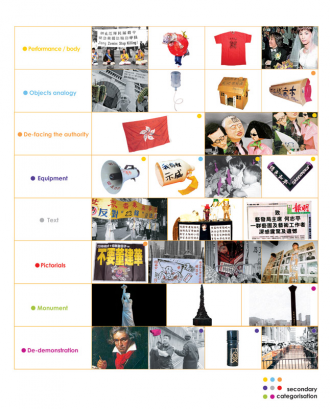














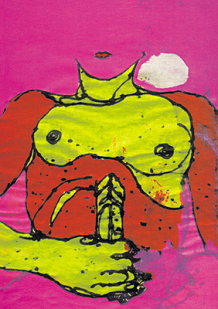





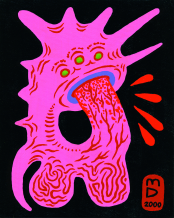
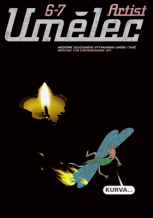
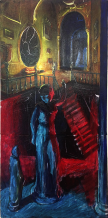


 New book by I.M.Jirous in English at our online bookshop.
New book by I.M.Jirous in English at our online bookshop.
Comments
There are currently no comments.Add new comment